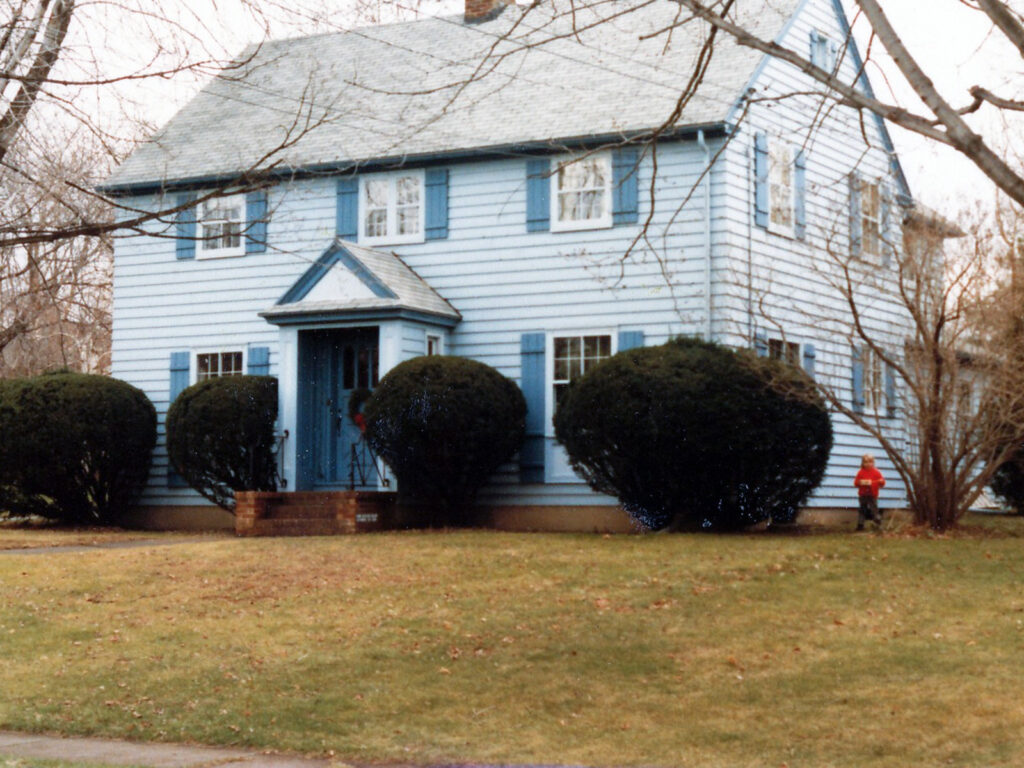
This is what our front landscape looked like when we moved in — the typical suburban landscape.
It was ugly and sterile, but no one would ever have thought much about it since it “fit in” with what you’re supposed to have in the suburbs.
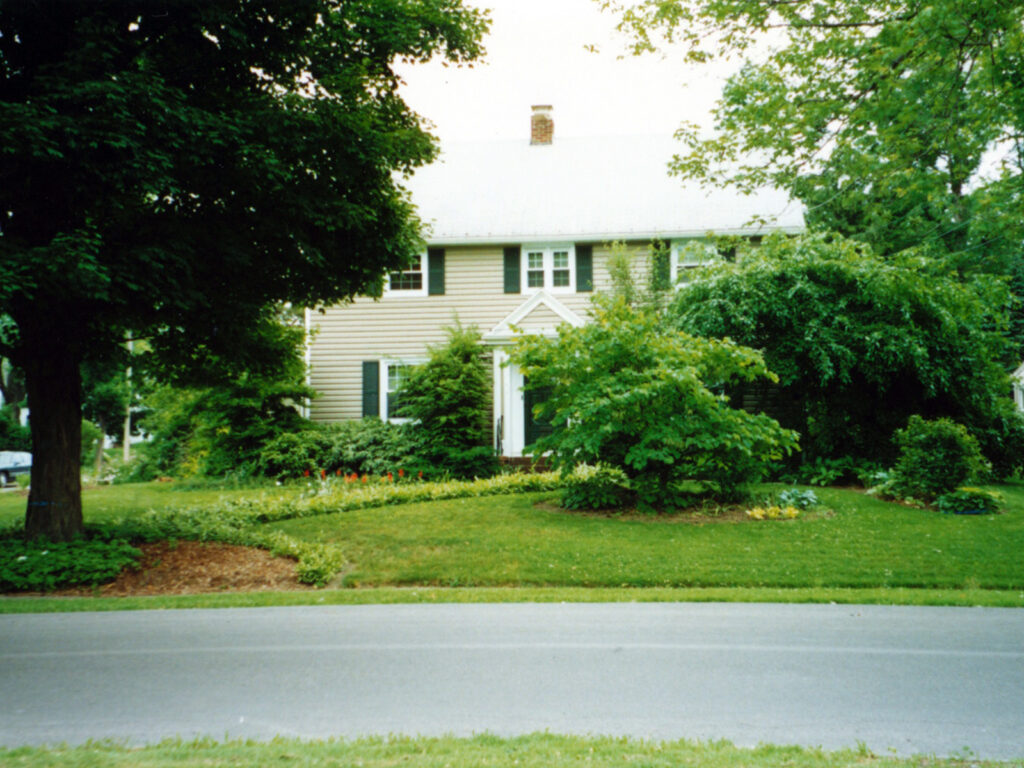
We changed it somewhat through the years, but it was still somewhat conventional. When we decided to create a habitat garden, all that lawn had to go!
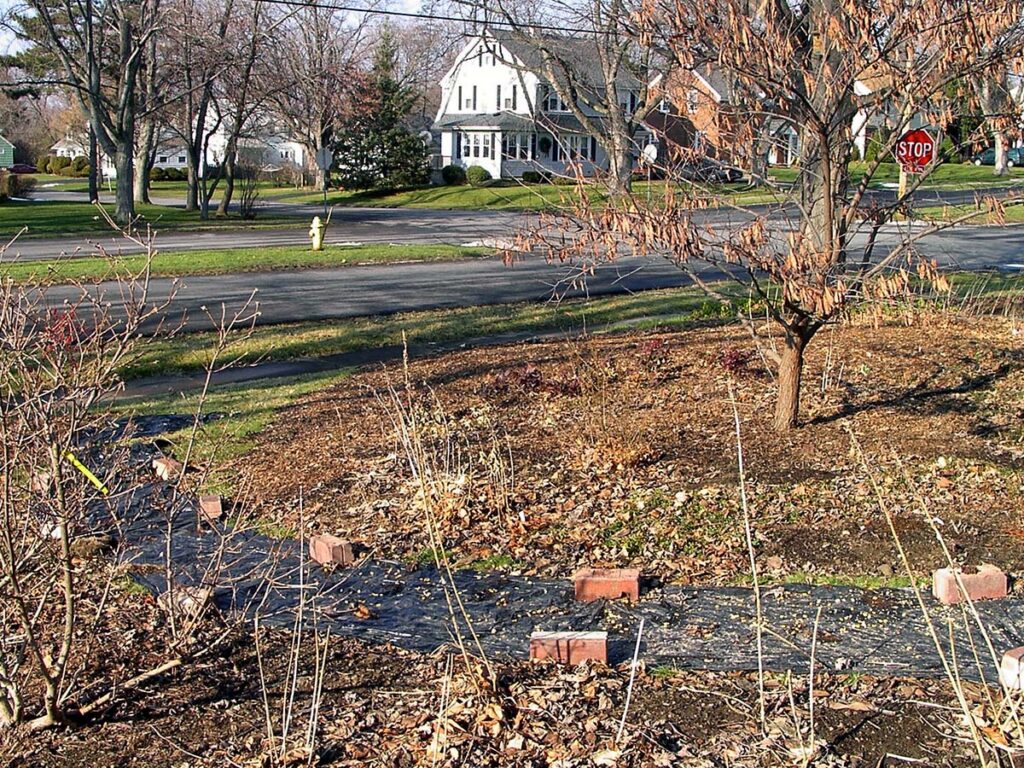
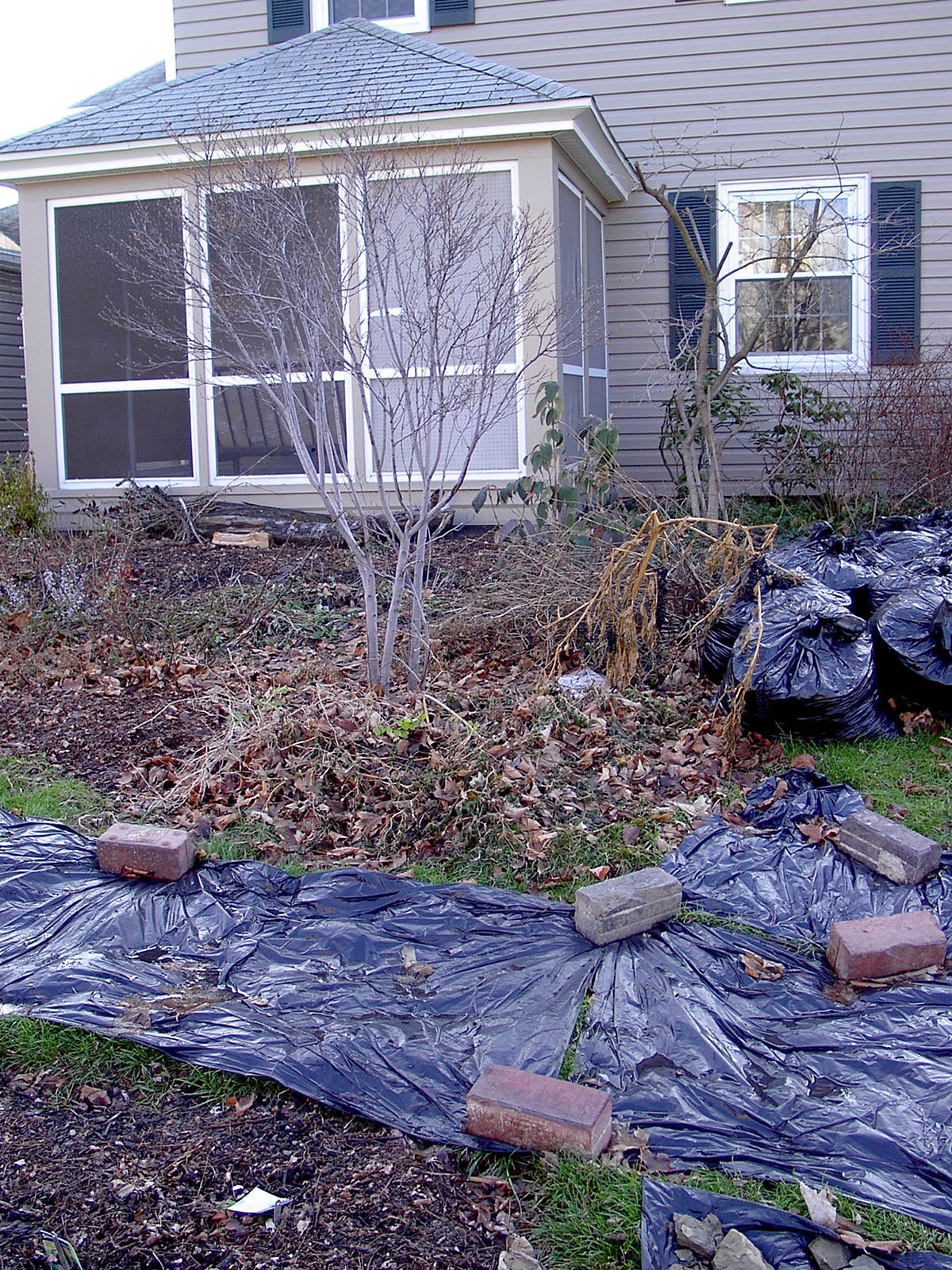
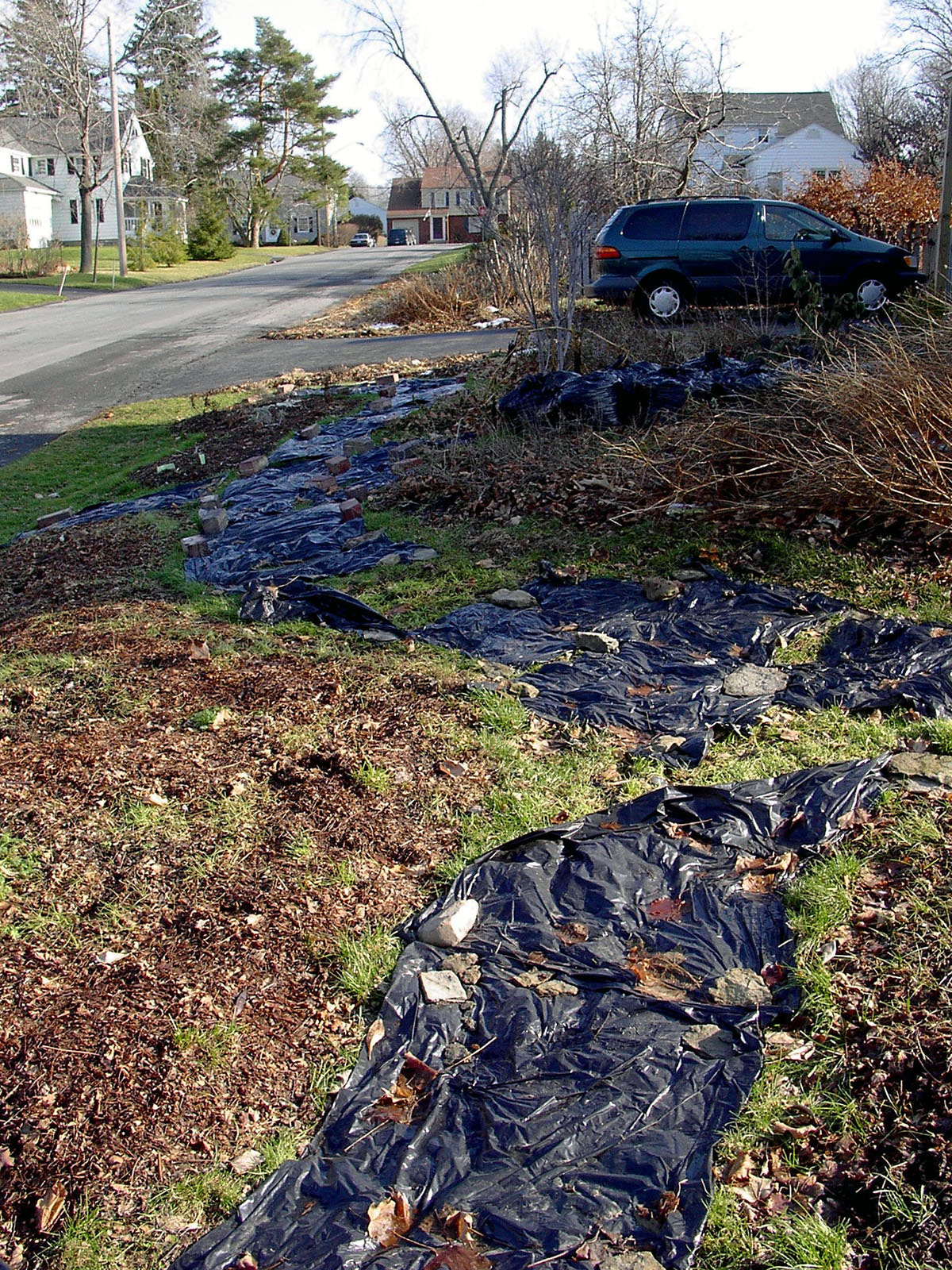
Not knowing there were easier ways, we tried to kill the grass with plastic over the winter. You might know that it was to be one of the very few winters with almost no snow (we live in Syracuse, after all), so this ugly plastic all over the yard was visible all winter.

But that wasn’t the biggest problem. It turns out that this isn’t the best way to kill the grass after all. Layering mulch on top of a very thick layer of newspapers or cardboard seems to be the recommended approach. The next spring, I pretty much dug out the now-weakened grass by hand. Not easy, but it did get the job done (and I was younger then — a mere youth in my late 40s).
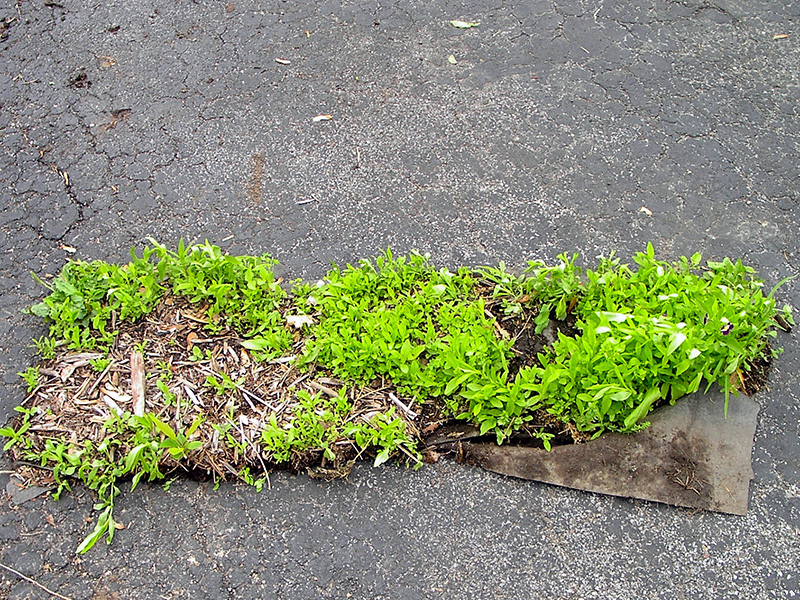
Unfortunately, we had put a layer of landscape cloth on all the paths. Another mistake. This landscape fabric isn’t very effective, and we had roots spreading very easily under, over, and sometimes through the fabric.
In the last few years, we’ve been pulling it out when we find it — not as easy as laying it down!

I love the cool-ness and the forest-y feeling of our front yard, especially on a hot summer day. It is literally (we checked with a thermometer) many degrees cooler in our little “forest” than it is in the sun. Our lawn-less landscape feels so full of life, and I love walking the paths. Our yard is definitely (and unfortunately) still an anomaly in the neighborhood.
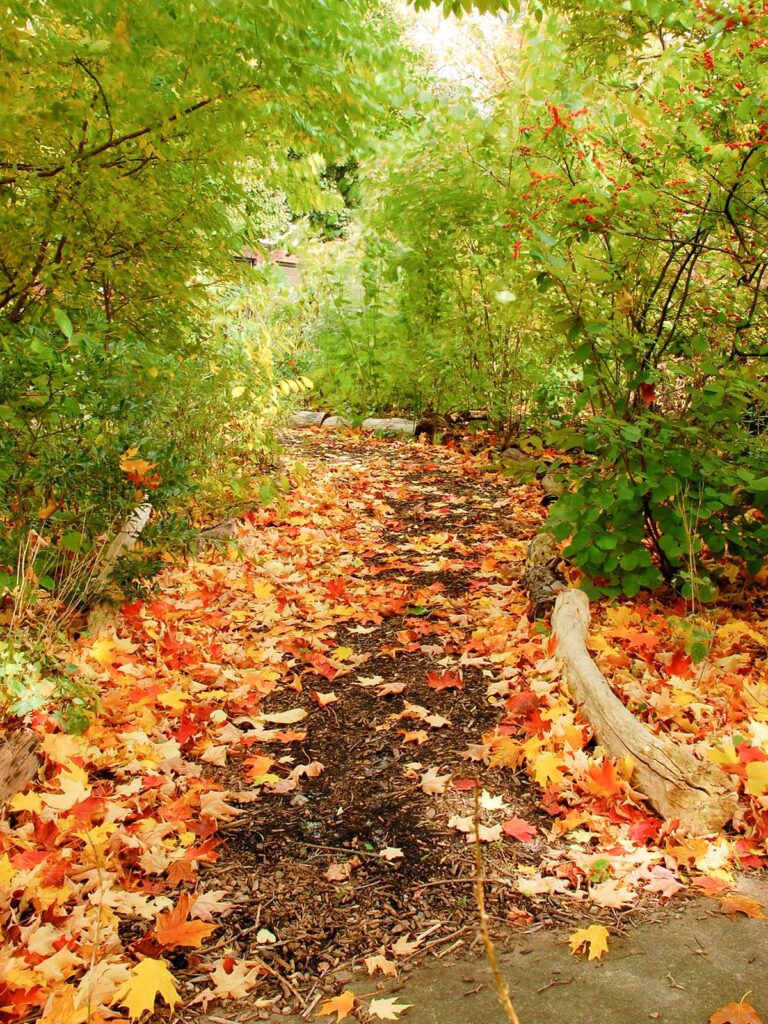
Of course, there’s a difference between style and substance. We could have used the same plants in a more conventional design and it would have similar ecological value, but we like the more natural look.
And, conversely, some “English” or “cottage” gardens may have a natural landscaping style, but unfortunately use non-native plants so they have limited habitat value.
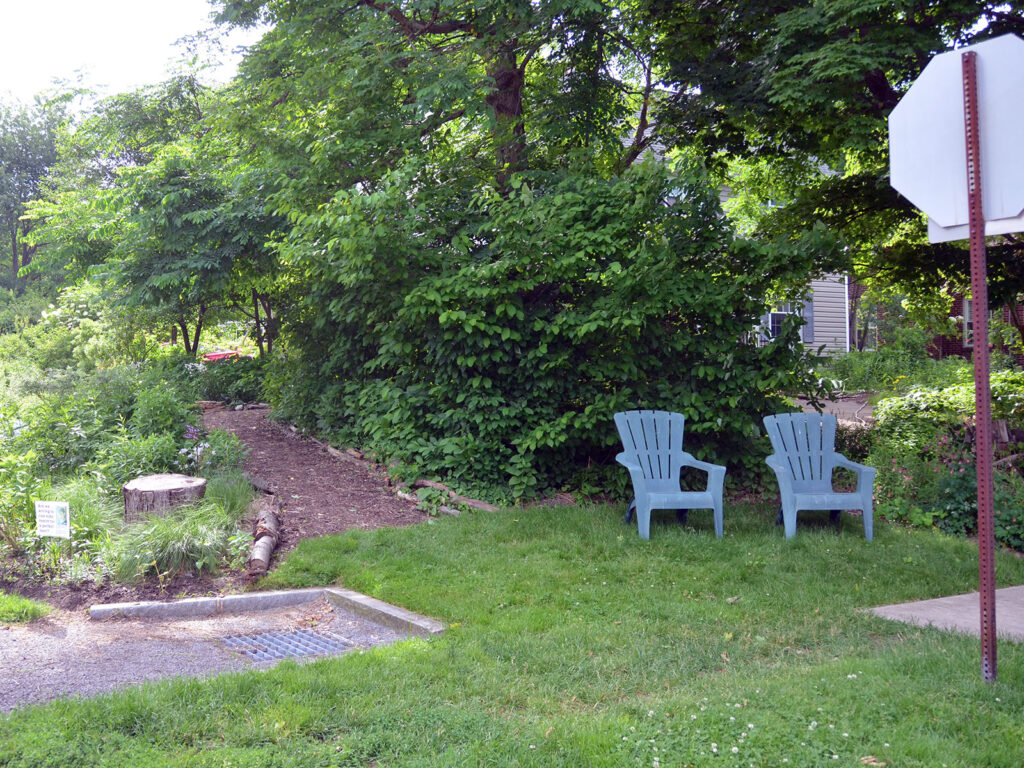
This and the thin strip along the side road is our only lawn. It’s a good opportunity to humanize it with some chairs, where we enjoy sitting on hot summer days.
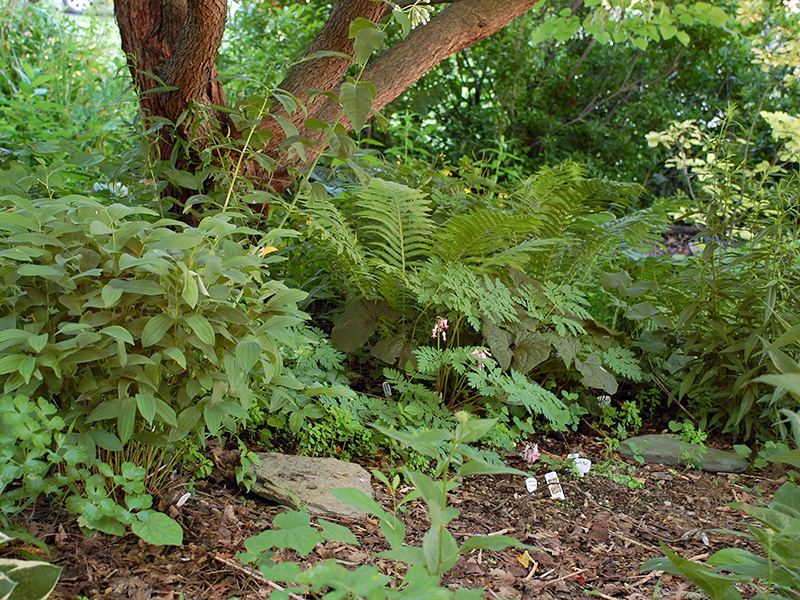
The redbud tree (Cercis canadensis) (whose trunk is at the top right) has seemed to be at the end of its useful life for a while, but it keeps hanging on. When the time comes, we’ll dreplace it with a medium-size understory tree to provide shade for our spring ephemerals planted there.
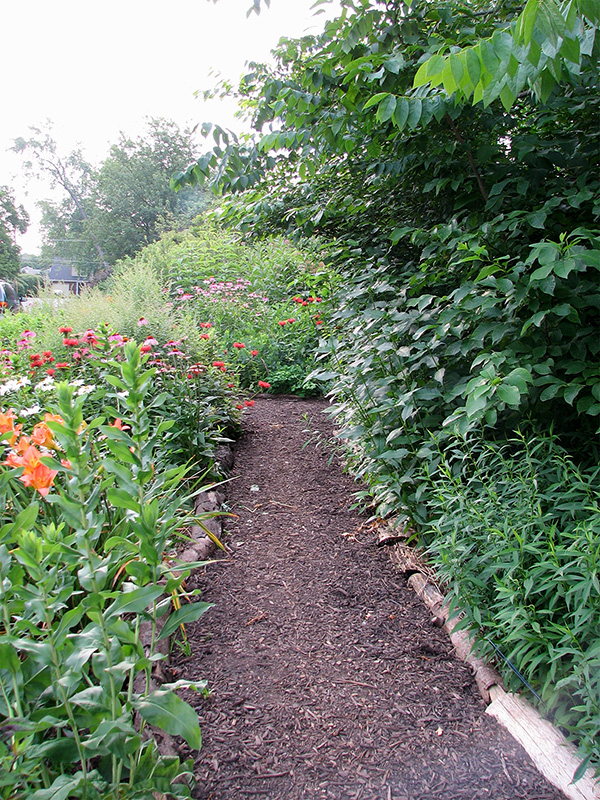
This is the path from the front lawn. It meets up with the path leading to the driveway.
Reflections
Fortunately, good garden design discourages the use of only one plant species, so there is no inherent conflict between creating a beautiful garden and establishing a functioning, sustainable garden ecosystem. This brings me back to my theme of using native plants, because alien species in our gardens are often so nutritionally unavailable to the other members of the garden community we seek to establish, they might as well not be there at all. If you have 15 species of plants in your garden, and 13 of them are aliens that are toxic to insect herbivores, you have, in effect, a garden based on only two plant species. Too simple.
~ Douglas Tallamy, Bringing Nature Home: How Native Plants Sustain Wildlife in Our Gardens, 2nd edition pp. 101-102
…landscapes that incorporate native plants and natural processes will require less time, money and energy for upkeep than designs in which plants are selected and combined for ornamental effect alone. A purely ornamental garden is like a beautiful, sleek automobile with no engine. It may be nice to look at, but the only direction it will go without help is downhill. We will be perpetually required to tow these gardens up the hill with fertilizers, watering hoses and weeding forks.
~ Larry Weaner, Ten Elements of Natural Design
The balance of nature is … a complex, precise, and highly integrated system of relationships between living things which cannot safely be ignored any more than the law of gravity can be defied with impunity by a man perched on the edge of a cliff.
~ Rachel Carson, Silent Spring, 1962
Think of the tree as the Earth’s breathing apparatus, an organ that helps regulate the planet’s atmosphere by exhaling fresh oxygen and inhaling the carbon that animals, decay, and civilization spew into it. The tree, under this new description, is not merely a member of the local forest ecosystem (where we’ve known for some time that it exerts considerable influence on the local life, soil, and even climate); it’s also a vital organ in a global system more intricate and interdependent than we ever realized. The Earth may not be a spaceship but an organism, and the trees may be its lungs.
~ Michael Pollan, Second Nature: A Gardener’s Education
